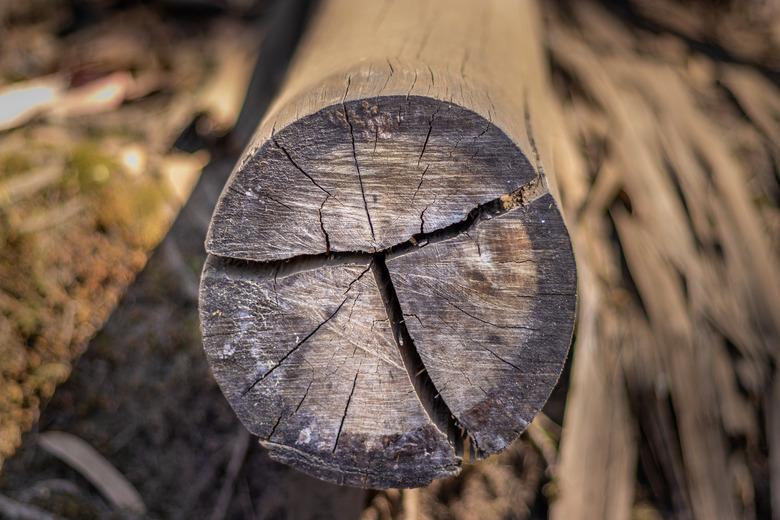How To Secure Landscape Timbers
We may receive a commission on purchases made from links.
Landscape timbers represent a versatile material for the garden or yard. With two flat sides and two slightly rounded sides, they're easy to stack on top of each other while also giving the luxurious appearance of log siding. Landscape timbers need to be secured both to the ground and to each other for safe and beautiful results. Rebar and landscape spikes are the two most common materials used to secure landscape timbers.
Secure Stacks With Rebar
Secure Stacks With Rebar
Rebar is both long and sturdy enough to pass through multiple landscape timbers to create a solid wall for a raised garden. Better still, the rebar can sink into the ground to lock the wall into position at the same time. You will need a piece of rebar long enough to pass through all of your landscape timbers plus another 1/3 to 1/2 the above-ground length to drive into the ground. This is the same rule of thumb used for fence posts, and it means a stack of landscape timbers 12 inches high would need to be secured with a 16- to 18-inch piece of rebar.
Lay the landscape timbers flat on the ground in the configuration that you want (i.e., staggered joints). Mark where you plan to drill the holes for the rebar, making sure all the holes will line up. You can turn each landscape timber flat side up and chalk a line across them to make this a little easier. For every landscape timber you add to the stack, plan to add another piece of rebar through them. For example, a stack of three landscape timbers would be secured by three separate pieces of rebar.
Use a drill bit larger than the diameter of your rebar to cut the holes. Stack the landscape timbers in their intended configuration and in the location where you plan to install them. You may need to even out the ground a little with a shovel. Place the rebar through the holes and then use a sledgehammer to pound it into the ground until it is flush with the top landscape timber.
Spikes for Smaller Landscape Timbers
Spikes for Smaller Landscape Timbers
For single landscape timbers that line the edge of a flower garden, you have several options. The first is to dig some of the existing sod out of the way and nestle the timbers into the crevice so they don't roll over. However, if your yard ever floods during a heavy rain, the landscape timbers will float away without something pinning them down.
That's where landscape timber spikes help. They look like giant nails, but they are intended to secure landscape timbers to the ground. You can pound them into each landscape timber with a sledgehammer, but this might split the wood and is definitely a more labor-intensive approach. Instead, drill a hole through the landscape timber and use the mallet to drive the spike into the ground.
If you don't like the way the head of the spike looks on the landscape timbers, you can use small sections of rebar instead. The rebar will be hidden inside the predrilled hole.
Brackets/Braces for Extra Support
Brackets/Braces for Extra Support
Brackets and braces are also hidden supports that work best for smaller stacks of landscape timbers. Use brackets on the inside of a raised garden bed for a little more strength at the joints and corners. You can also prevent the landscape timbers from bowing out from the pressure of the dirt by pounding a piece of rebar into the ground immediately adjacent the outside of the landscape timbers.
